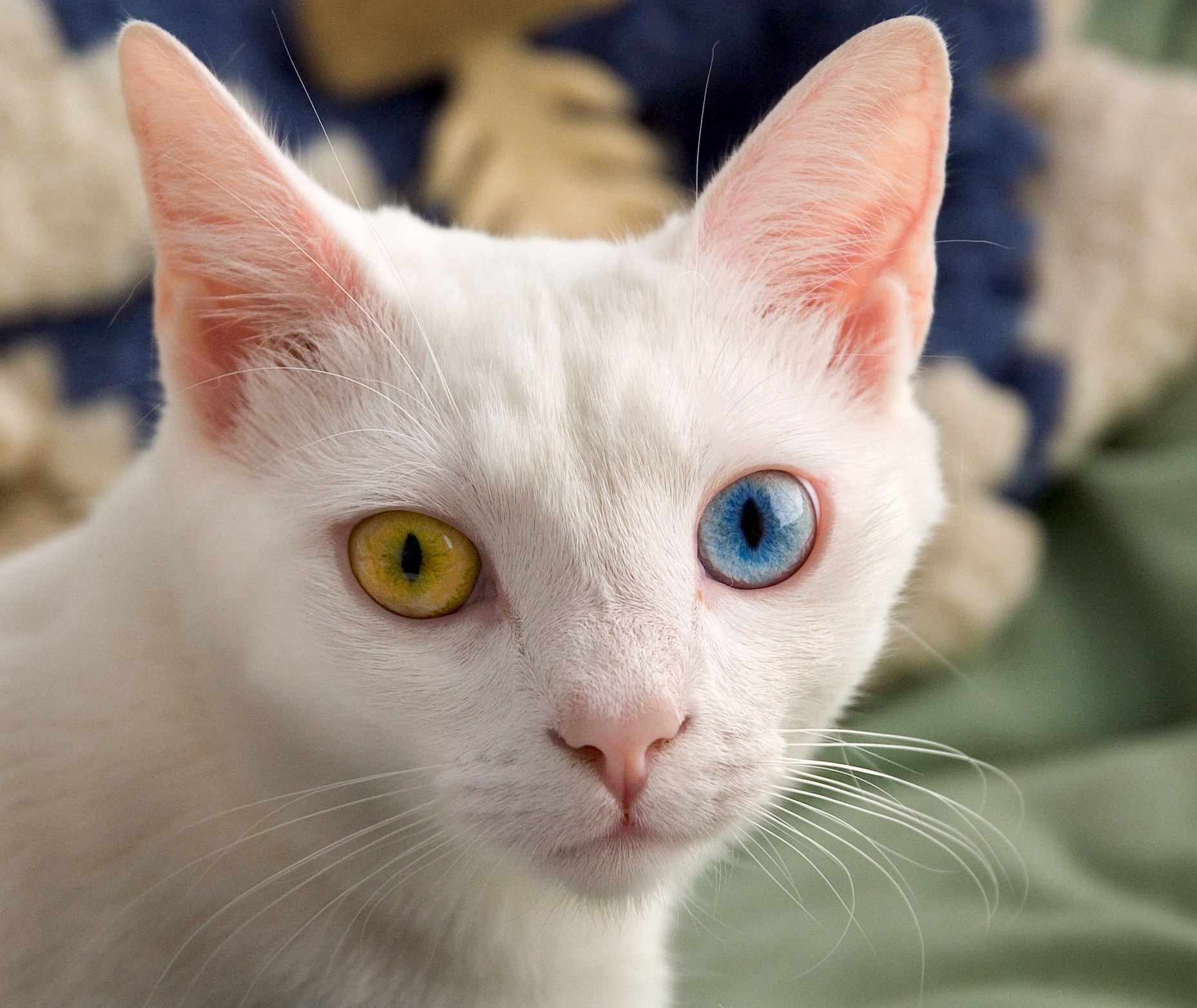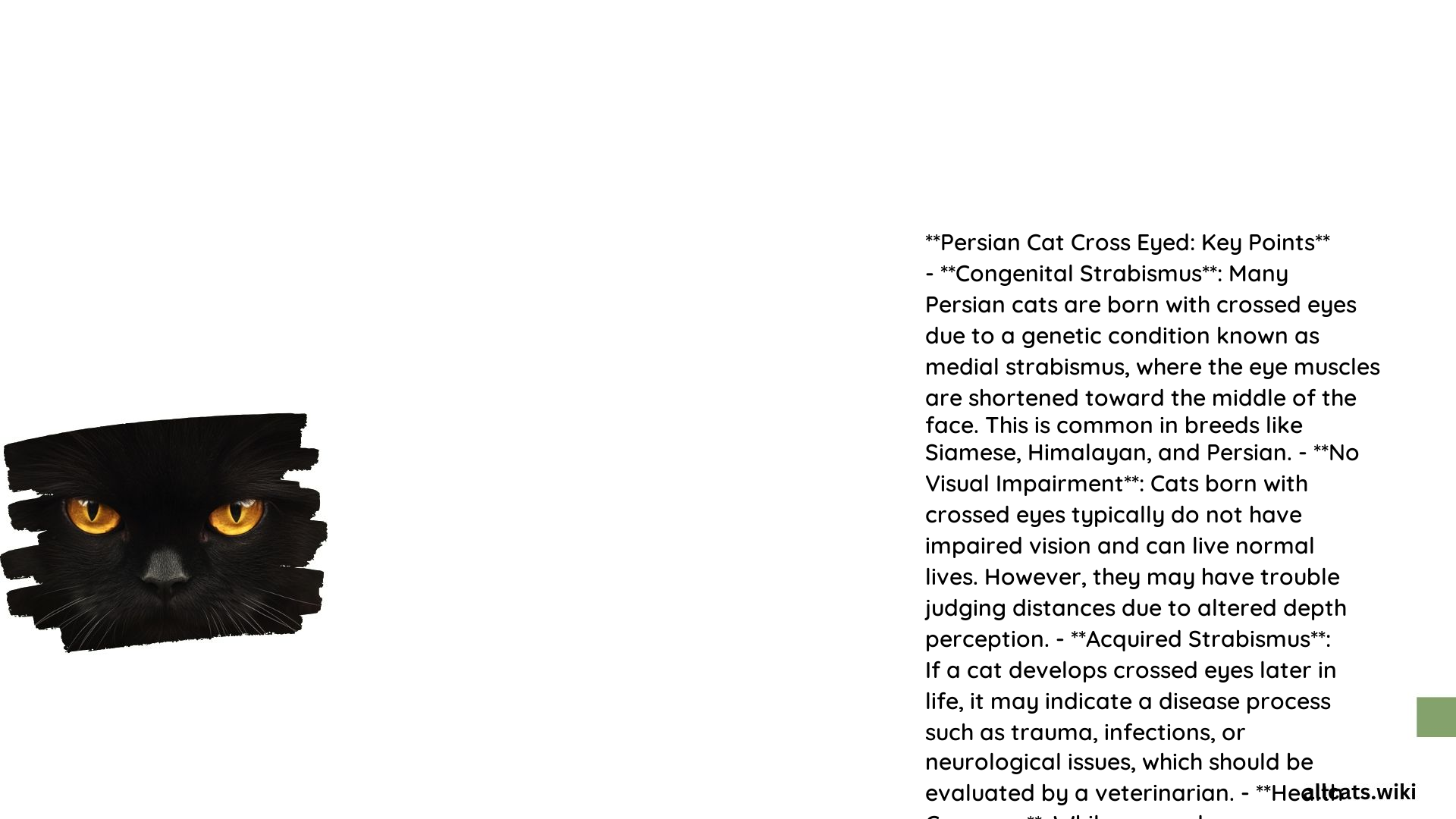Cross-eyedness, or strabismus, is a common condition observed in Persian kittens, a breed known for its distinctive facial features. This article delves into the causes, prevalence, and care recommendations for Persian cats with this unique trait.
What Causes Cross-Eyedness in Persian Kittens?

The primary cause of cross-eyedness in Persian kittens is a genetic predisposition. Persian cats, along with other breeds like Siamese and Himalayan, are more prone to this condition due to their breed-specific characteristics. The condition arises from abnormalities in the muscles that control eye movement, leading to an abnormal eye alignment and a cross-eyed appearance.
How Does Cross-Eyedness Develop in Persian Kittens?

Cross-eyedness can be present at birth or develop later in life. Kittens born with convergent strabismus, where the eyes turn inward, generally adjust to the condition and lead normal lives. However, if the condition develops later, it may signal underlying health issues such as vestibular system disease, eye trauma, or neurological problems.
What is the Prevalence of Cross-Eyedness in Persian Cats?
While there is no specific percentage provided for the prevalence of cross-eyedness in Persian kittens, it is known that this breed is among those more commonly affected by strabismus due to genetic predisposition. The good news is that for many kittens, especially those with genetic strabismus, the condition does not resolve on its own as they mature. However, in cases where the condition is more pronounced or develops later in life, veterinary evaluation is necessary to determine the underlying cause and appropriate treatment.
How Do Cross-Eyed Persian Cats Behave?
Cats with strabismus often adapt well to their condition and do not exhibit significant behavioral changes. However, if the condition is accompanied by other symptoms such as head tilting, lack of coordination, or changes in appetite, it may indicate a more serious underlying issue.
What Care Recommendations are Important for Cross-Eyed Persian Cats?
Regular veterinary check-ups are crucial to monitor the condition and address any potential complications. Owners should be vigilant for signs of other health issues and ensure the cat’s environment is safe to prevent injuries that could exacerbate the condition.
How Does Cross-Eyedness Impact the Health and Well-being of Persian Cats?
While strabismus itself is generally not painful or debilitating, it can be a sign of other health issues if it develops later in life. Ensuring proper veterinary care can help manage any associated conditions and maintain the cat’s overall health. Despite the condition, many cross-eyed cats lead normal, happy lives, and proper care and monitoring can help mitigate any potential impacts on their well-being.
In conclusion, cross-eyedness in Persian kittens is a common condition that is often caused by a genetic predisposition. While the condition may not resolve on its own, with proper veterinary care and monitoring, many cross-eyed Persian cats can live happy and healthy lives.
